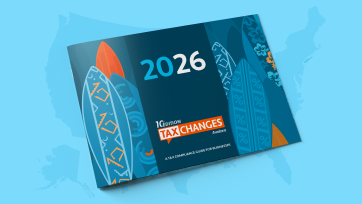
Navigating ecommerce tax issues in the tobacco and vape industry
Ecommerce. Efficiency and convenience for consumers. For sellers, constant tax complexity and fluidity. This is something tobacco sellers in particular know all too well.
Regulators and tax authorities have always kept the tobacco industry tidal with ever-changing regulations, taxation, and licensing. With new products like vapor wafting into the market, ecommerce sales surging, and the Prevent All Cigarette Trafficking (PACT) Act of 2009 spinning complications, industry sellers find themselves again straining to see through the haze of tax challenges.
A tax of many colors
Since the Civil War, the federal government has imposed an excise tax on cigarettes, but in 2017, only six states collected excise tax for vapor products (Louisiana, Minnesota, New York, North Carolina, Pennsylvania, and West Virginia). Jump to 2021, and 28 states plus the District of Columbia collect excise tax. Thirteen other states have legislation in the works: Alaska, Arkansas, Hawaii, Indiana, Iowa, Michigan, Mississippi, Missouri, Nebraska, North Dakota, Oklahoma, Tennessee, and Texas.
And as taxes often go, states do excise tax rates differently: Some tax a percentage of the wholesale cost; some tax a percentage of the retail price; others tax per milliliter or whether the item is an open or closed system; a few like to get fancy and levy a combination, like Georgia. The Peach State taxes 7% of wholesale cost, but $0.05 per milliliter on closed systems. New Jersey taxes 10% of retail on open systems and $0.10 per milliliter on closed; Kentucky takes 15% of wholesale and $1.50 per cartridge. Still, other states apply these rates only to products containing nicotine.
Part of the PACT
The PACT Act only further complicates the tobacco and vape ecommerce arena as it appears to supersede economic nexus with a heavier hand that, in 2021, applied all cigarette mandates to vapor products. In addition to several other complex regulations, the PACT Act requires sellers to collect and remit all applicable taxes as if each sale transaction physically occurred in the state of purchase. So, tobacco and vape sellers are responsible for all applicable taxes: excise and sales tax. Not only do sellers have to calculate and collect excise taxes in 28 possible states, they must also calculate and collect sales tax in 45 potential states.
A taxing state
The states don’t make it easy. Not only do sellers have to wrangle varying sales tax in different states, but possibly in myriad local jurisdictions as well. For instance, New Jersey only has two sales tax jurisdictions, but Texas — in true “everything is bigger in Texas” fashion — boasts 1,600 sales tax jurisdictions. Unfortunately, fewer jurisdictions don’t guarantee simplicity, especially when the powers that be conjure up hundreds of new and changed tax rates a year, on average.
Of course, where a seller collects excise tax and sales tax, a seller must also file excise and sales tax returns. And before a seller can even ship to another state, they must first register for sales tax and excise tax licenses in those states.
To shake things up a little more, six states plus the city of San Francisco have banned vapor product delivery directly to individual consumers. Massachusetts, New Jersey, and Rhode Island prohibit selling flavored vape items — all of which the PACT Act has enforced. Originally, the act preserved states’ authority to ban sellers from shipping tobacco products to private individuals but has now extended that authority to vapor products.
Business-to-business bypasses
Business-to-business (B2B) sales are a little bit different, but not much. B2B sellers are exempt from sales tax if they hold a resellers certificate, but they still must register and file a zero return. They must also provide a copy of the certificate to the selling business to ensure exemption.
What’s to come?
The coming months will most likely add more states to the excise tax menu, and no doubt, the rates won’t be any less complicated. And for a few states, the rates could be rather high. Iowa is looking at a 50% wholesale tax on vapor products as Arkansas introduced a 68% rate on wholesale. But Alaska isn’t messing around with a proposal for 75% on wholesale.
The increase in youth vapor purchases has been at least partial motivation for some states’ high excise tax on vape. But others worry an excessive excise tax that matches or exceeds those of cigarettes will drive smokers back to their packs — ultimately undoing what vape set to do: offer adults a “healthier” alternative to smoking.
Will the high taxation of vapor products push sales back toward tobacco? Will states adjust their vapor excise tax in response? Or will they further increase taxes on tobacco products?
Tobacco and vapor regulations and taxation seem to shift and morph like clouds of smoke. And keeping track of those differences and changes is a strenuous task, but compliance is critical to operating legally.
Automated tax compliance software can help keep things in order and a seller’s business complaint.

Avalara Tax Changes 2026 is here
The 10th edition of our annual report engagingly breaks down key policies related to sales tax, tariffs, and VAT.
Stay up to date
Sign up for our free newsletter and stay up to date with the latest tax news.














